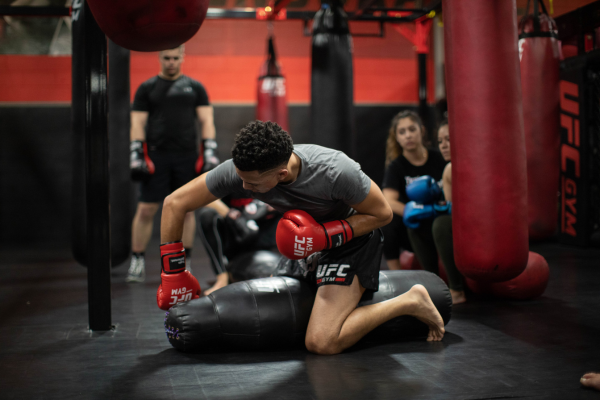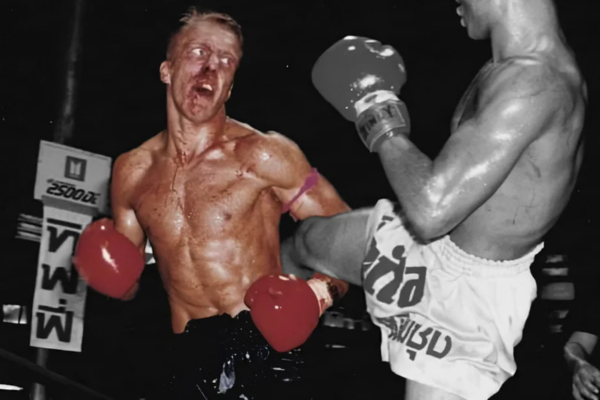The history of karate

Karate is one of the most widely practiced martial arts in the world, but its history is a fascinating journey through time and cultures. From its humble origins in Okinawa to modern gyms around the world, karate has evolved from a form of self-defense to a globally recognized discipline. In this blog, we delve deep into the history of karate, discover its influential masters, and explore how this martial art evolved into what it is today.
The origins of karate in Okinaw
Karate has its roots in ancient Okinawa, an island strategically located between Japan and China. In the 14th century, Chinesetraders brought their martial arts to Okinawa, where they fused them with indigenous self-defense techniques known as "Tode" (hand of China). This early form of martial arts was influenced by Chinese styles such as Shaolin Kung Fu , but adapted to Okinawan culture and circumstances.
When the Japanese Satsuma clan occupied Okinawa in the 17th century and banned the carrying of weapons, unarmed martial arts became increasingly important. Okinawan masters developed secret techniques to protect themselves, which eventually led to the first forms of what we now know as karate. Karate was practiced in secret for a long time, often at night and hidden in dojos . It was not only a means of physical defense, but also a method of developing discipline and inner strength. Three major styles emerged during this period, named after the cities in which they were developed: Shuri-te , Naha-te , and Tomari-te . These forms laid the foundation for the later karate styles we know today.
Karate and the Japanese influence
In the early 20th century, karate began to gain acceptance outside Okinawa. One of the most influential figures in this development was Gichin Funakoshi , who introduced karate to Japan. He was an Okinawan grandmaster and is often considered the father of modern karate. Through demonstrations at universities and collaboration with Japanese martial arts experts, Funakoshi ensured that karate was integrated into the Japanese budo system . His version of karate, later known as Shotokan , emphasized discipline, form (kata), and effective striking techniques. Through his efforts, karate eventually became a recognized and respected martial art in Japan and later worldwide.
With the popularity of karate in Japan, various masters began to develop their own styles. The four main traditional styles are:
- Shotokan – Characterized by deep stances and powerful, linear movements.
- Goju-Ryu – A mix of hard and soft techniques, with a strong focus on breathing and circular movements.
- Wado-Ryu – Faster and more fluid techniques, with influences from Japanese jiu-jitsu.
- Shito-Ryu – A combination of Okinawan and Japanese influences, with many different katas.
Each style has its own characteristics, but they all share the same fundamental principles: respect, discipline and self-development.
Worldwide spread of karate

After World War II, karate spread rapidly around the world. American soldiers stationed in Japan encountered karate and brought the martial art back to the United States. Karate was increasingly taught in gyms and martial arts centers, which made it known outside of Japan.
Hollywood also played a major role in the popularity of karate. Movies like The Karate Kid and the fight scenes of Bruce Lee and Chuck Norris inspired a new generation to take up karate. Karate became synonymous with discipline, strength and honor, values that were embraced worldwide.
In 2021, karate was finally recognized as an Olympic sport at the Tokyo Olympics. This was a historic moment that showed how far karate had come. Today, karate continues to evolve, with competitive styles such as Kumite (sparring) and Kata (forms) as core components of international tournaments. Additionally, karate has also found its way into modern combat sports such as MMA (Mixed Martial Arts) , where karate techniques are effectively combined with other styles.
The philosophy and values of karate
Karate is more than just a martial art; it is a philosophy of life. One of its most important principles is "karate ni sente nashi", which means "There is no first attack in karate". This emphasises the defensive and peaceful nature of the sport. Karatekas learn to respect their opponents and strive for self-improvement rather than aggression.
Besides self-defense, karate offers many benefits, such as improved coordination, strength, flexibility and endurance. But it also helps with mental development: karate teaches patience, perseverance and self-control qualities that you can also apply in everyday life.
Karate today
Although traditional styles are still practiced, karate has adapted to the modern world. Sport karate is becoming increasingly popular, with fast and dynamic techniques suitable for competition. However, traditional karatekas remain true to the old forms and philosophies, creating a nice balance between sport and tradition.
Want to start karate? Find a dojo that suits you! Pay attention to things like the instructor's experience, the atmosphere in the gym and what style is taught. Start with the basics, focus on technique and most importantly: enjoy the process!
What does karate mean to you?
Karate is a beautiful sport with a rich history and deep philosophy. Whether you are a beginner or an experienced karateka, everyone has their own unique experience with this martial art.
Have you ever practiced karate? What does karate mean to you? Share your experience in the comments below and let's celebrate the passion for karate together!
Want to get started with karate yourself? Discover our range of karate gear at Fightstyle.nl and start training today!
 Nederlands
Nederlands
 English
English
 Deutsch
Deutsch



Leave a comment